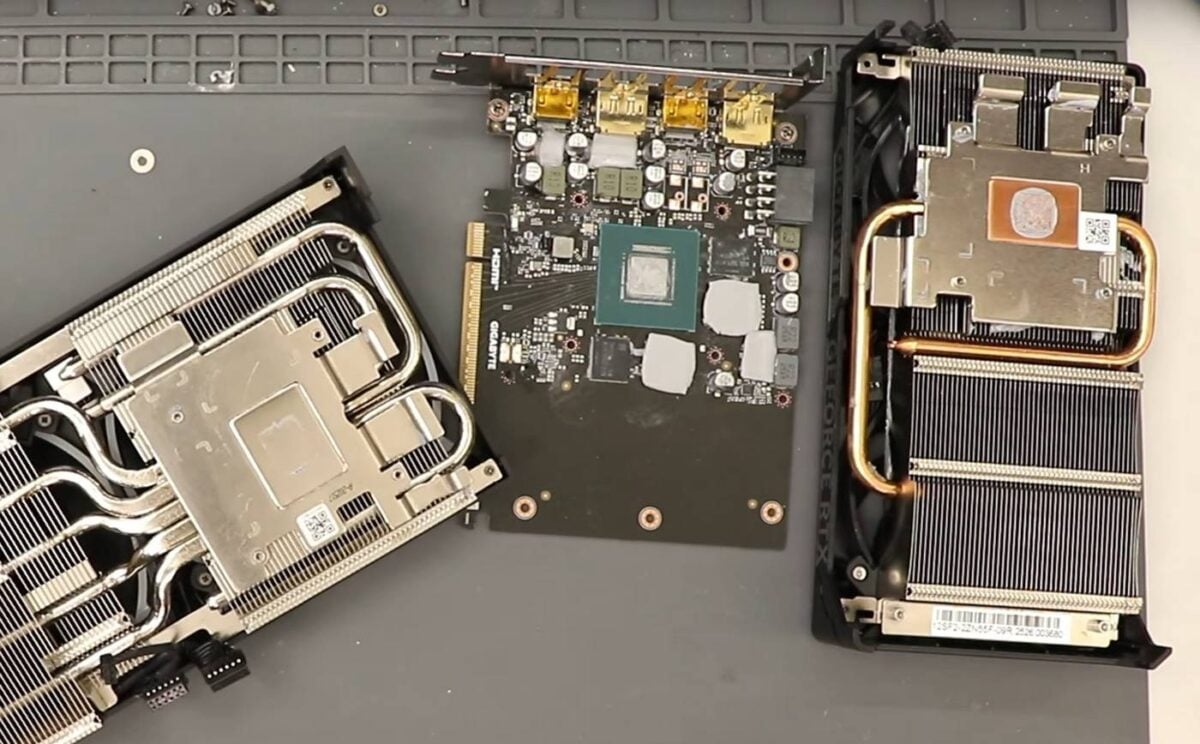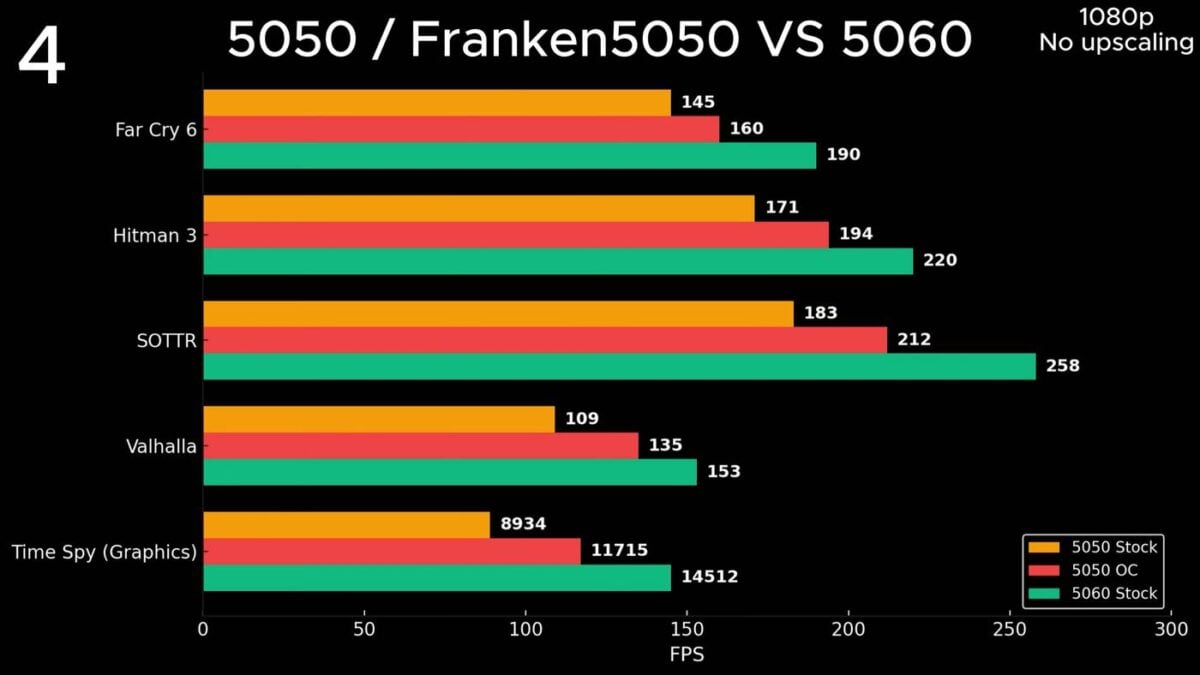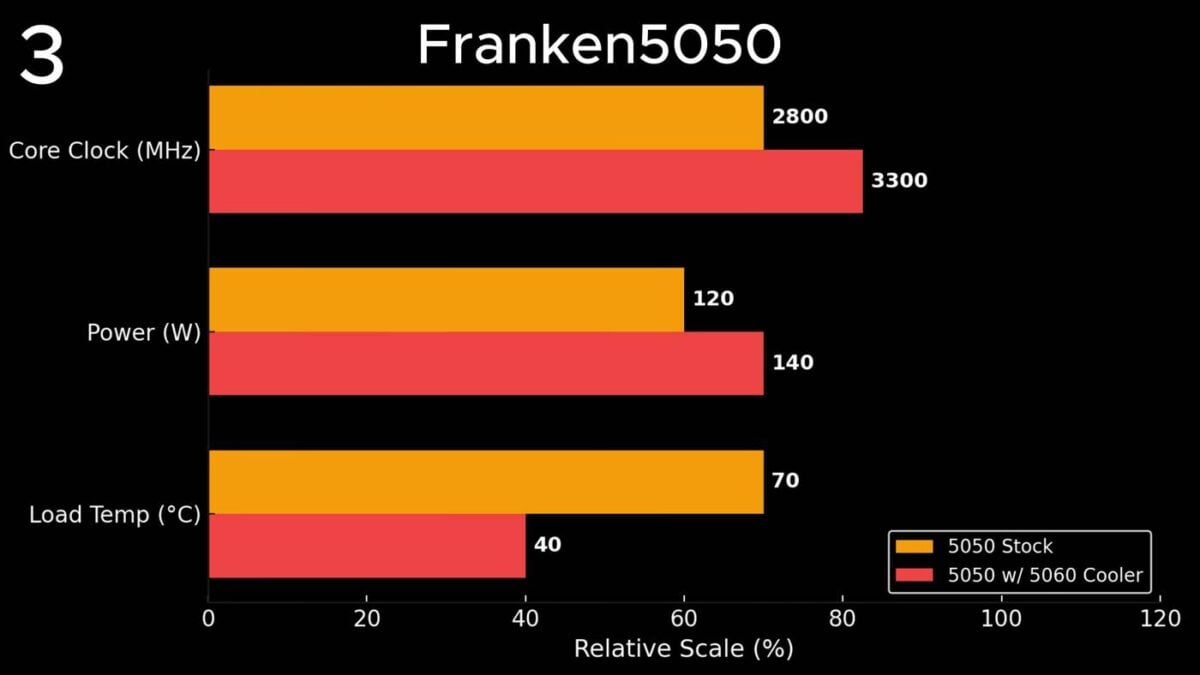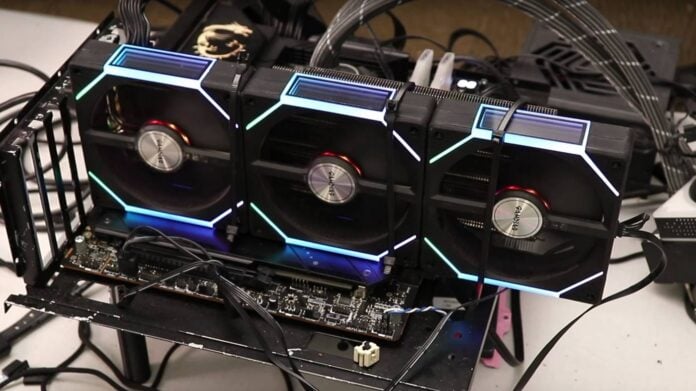YouTuber TrashBench has released another of his experimental videos. This time, he tries to push an Nvidia RTX 5050 GPU to its limit. While the original aim of transforming the RTX 5050 into an RTX 5060 failed, the resulting performance was very impressive, especially as it didn’t require any extreme cooling.
To do so, TrashBench proceeded to give the RTX 5050 all the help it could get, starting by swapping its stock dual-fan cooler with a triple-fan assembly borrowed from an RTX 5060. By borrowed we mean indefinitely, since the YouTuber was forced to drill a hole into the heatsink’s base plate to accommodate a capacitor on the RTX 5050. Of course, no respectable DIY mod is complete without a couple of zip-ties holding everything together – in this case, used to secure three 120mm Gamdias ARGB fans worth some $50. After this came the turn for the card’s firmware to be flashed with what we presume to be an unlocked BIOS.

Before these modifications, the RTX 5050 was about 33% behind the RTX 5060, which is around what we found during our review, too. To put this into numbers, the RTX 5050 delivered 183fps in Shadow of the Tomb Raider, against 258fps for the RTX 5060. The same goes for AC Valhalla, where the RTX 5050’s 109fps trailed the RTX 5060’s 153fps.

After swapping the cooler and flashing the BIOS, the RTX 5050 drastically reduced the distance separating it from the RTX 5060. This time, the RTX 5050 managed to push an impressive 212fps in Shadow of the Tomb Raider, shrinking the gap to the RTX 5060 to 18%. Better yet, AC Valhalla’s gains were even juicier, now reaching 135fps, i.e. 12% short of the RTX 5060. These gains are mainly the result of the 18% higher GPU boost, reaching about 3,300MHz, up from 2,800MHz.

But that’s not all, because this additional performance allowed TrashBench to also claim multiple world records in 3DMark Time Spy, Steel Nomad, and Port Royal. A great achievement for a tweak which didn’t need special cooling. In fact, the YouTuber indicated that this Frankenstein card beat his subzero runs.

Unsurprisingly, this overclock required more power from the system, jumping from 120W stock to 140W. That said, despite the increase in consumption, thanks to the much larger cooling assembly, the GPU remained very cool at 40°C, where previously it sat at 70°C. Overall, after this mod, the RTX 5050 gained about 16% uplift compared to its stock condition, sitting just 13% behind the RTX 5060.


